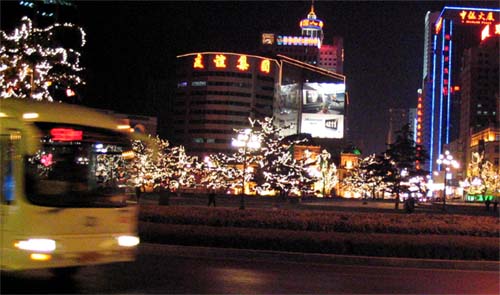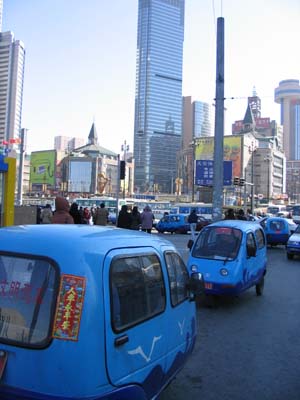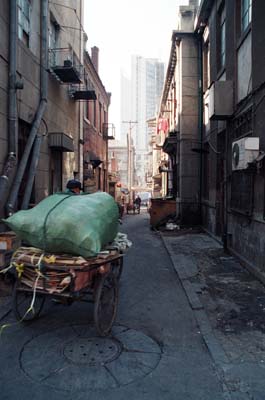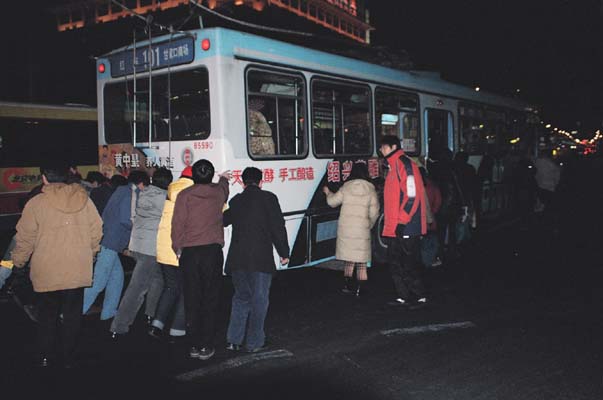
Dalian

View of down-town Dalian from my apartment
Dalian is a thriving port city, surrounded on three sides by the
waters of the Yellow Sea. Often referred to as the "Hong-Kong of the North",
it is considered a modern and cosmopolitan city, with Japanese, Korean, Russian
and Mongol influences.
Dalian, with 5.5 Million people, would be considered huge by European standards,
but in a country where cities of 10 million are commonplace, Dalian is just
another provincial city. However, it is considered by westerners as one of the
most ‘livable’ cities in China, having a lot of green areas, moderate
climate and relatively low pollution. In fact there is poster in the city center,
proudly boasting that Dalian was voted among the top 500 most beautiful cities
in the world!!

The down-town Dalian area contains many modern office blocks, towering hotels and about a dozen enormous shopping centers, the main boulevards resemble those in any large modern city. But take a few paces from the main streets, and you are in the real China, of decaying apartment blocks, hazardous pavements, street vendors and the general run-down air of a developing country. A signature feature of developing countries, China included, is how much everyday life is visible on the streets, in the open. People seem to 'live' their daily lives in the open, even in winter. In contrast to Irish towns where, in comparison, every thing seems to happen indoors.
While the ‘downtown’ area is compact, the city sprawls over a vast area. The Dalian municipal area is about the size of Munster. Swaths of land are give over to heavy industry, shipbuilding, petrochemical etc. In the 'Development Zones' there are hundreds (thousands?) of factories, producing everything from textiles to TV's.
 .....
.....
Dalian is served by many trams and buses(always overcrowded). Taxi's and 'micro cabs' are never more than a few seconds wait. The micro-cabs are three wheeled vehicles, which can seat two intimate friends.

The buses are cheap, but there are hidden costs, such as when there is a fault in the overhead power-cable. Everyone needs to get out and push to the next segment.
Back to Ken Power China page,
©Ken Power 2005